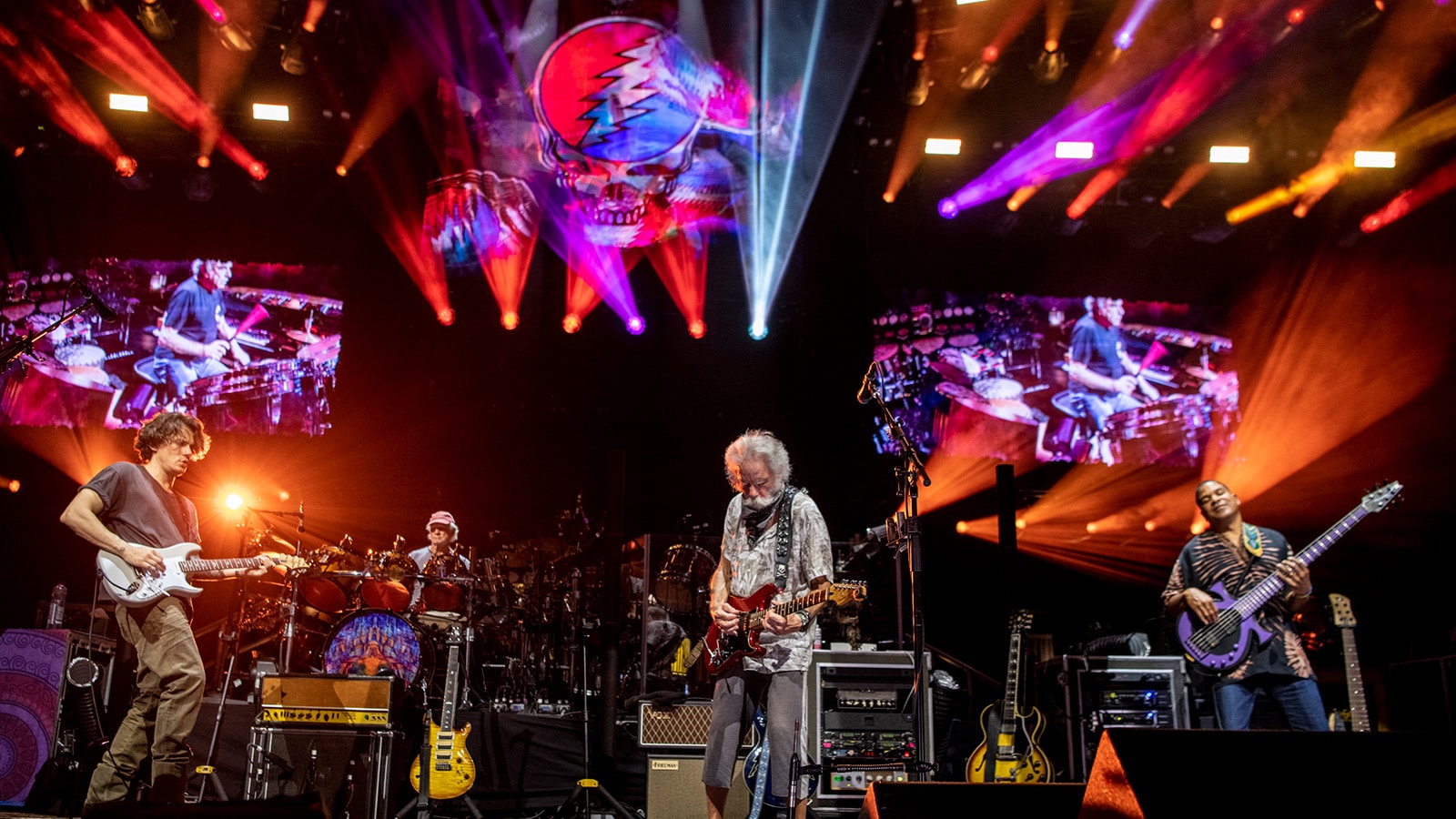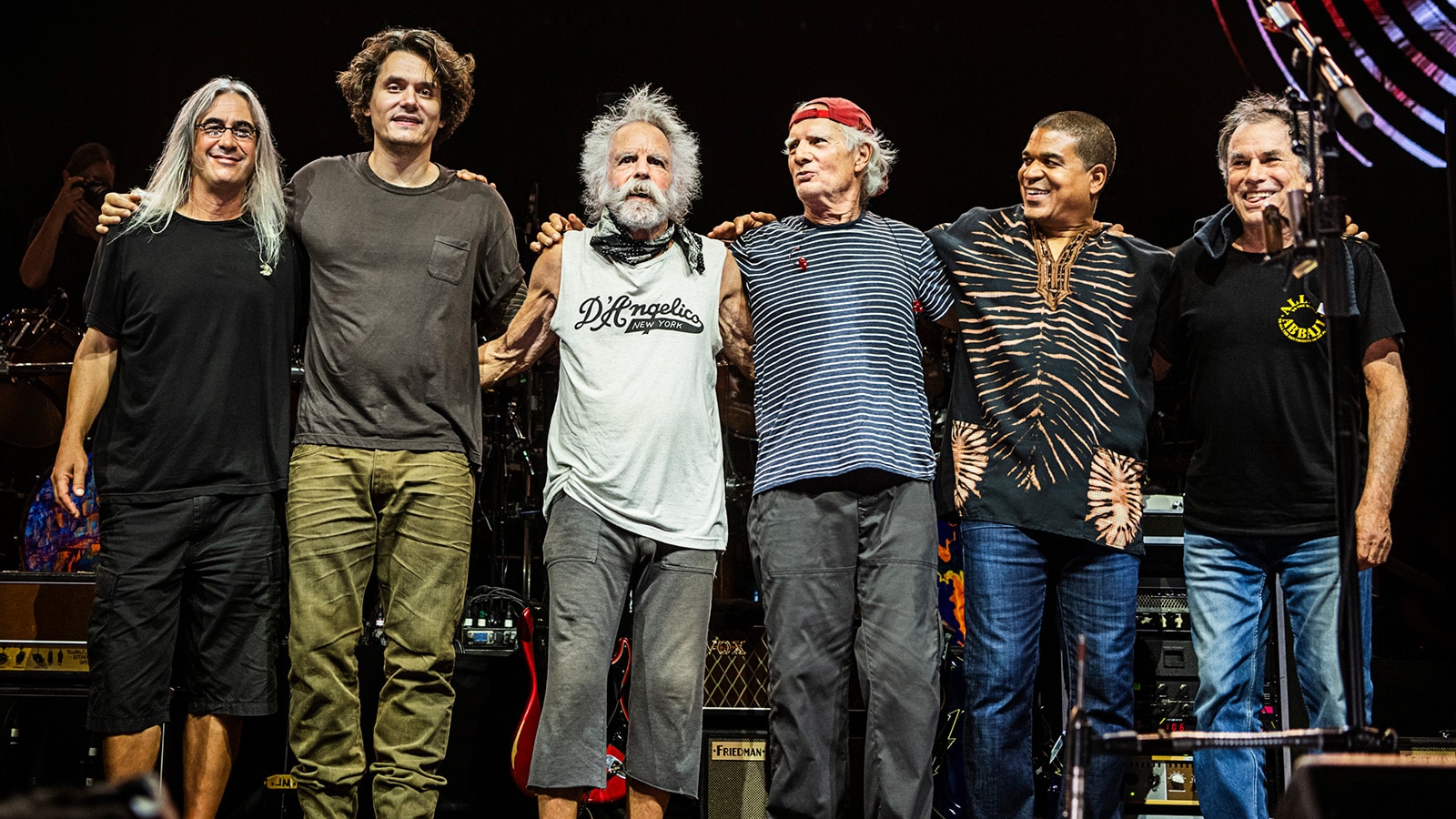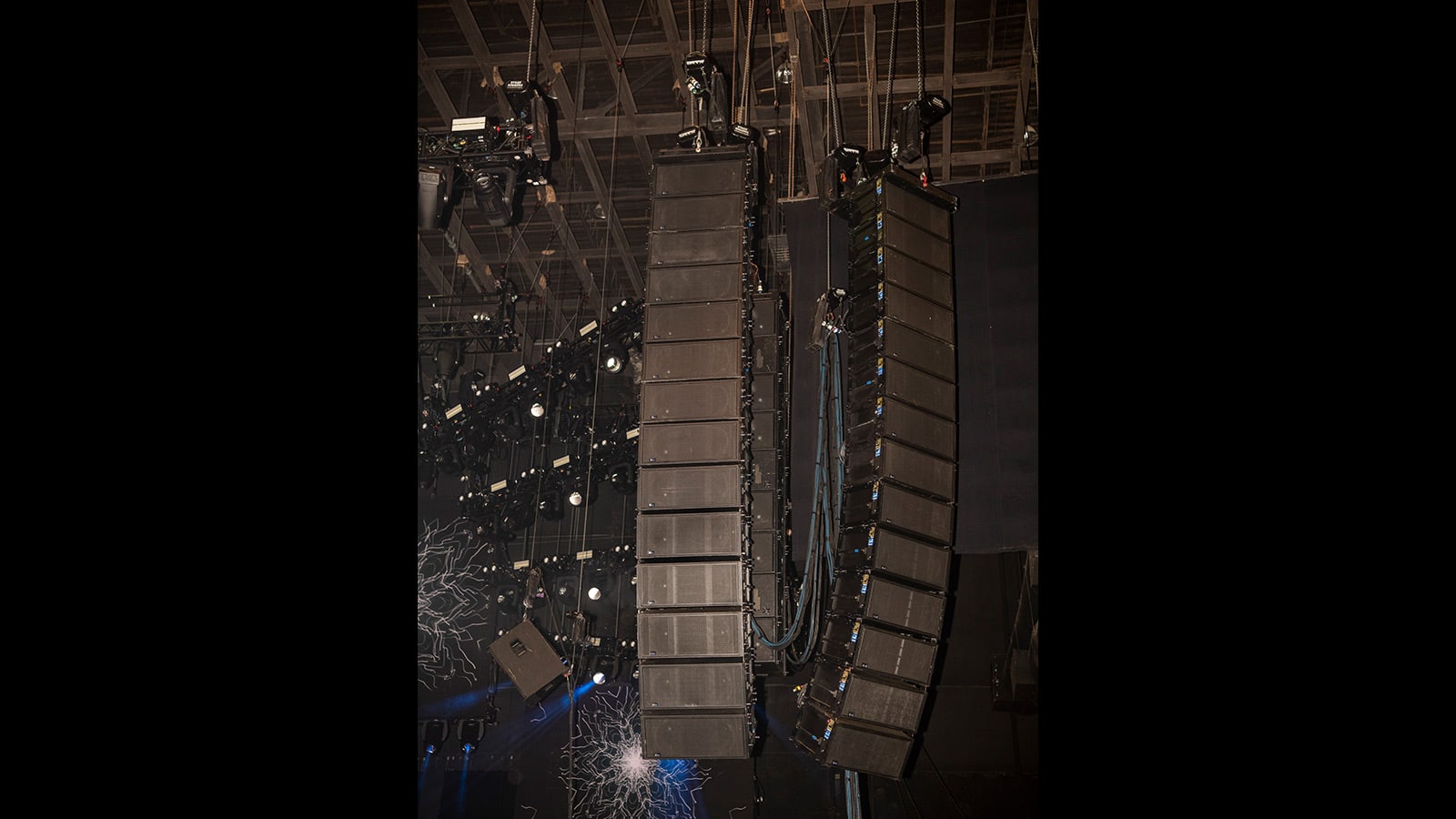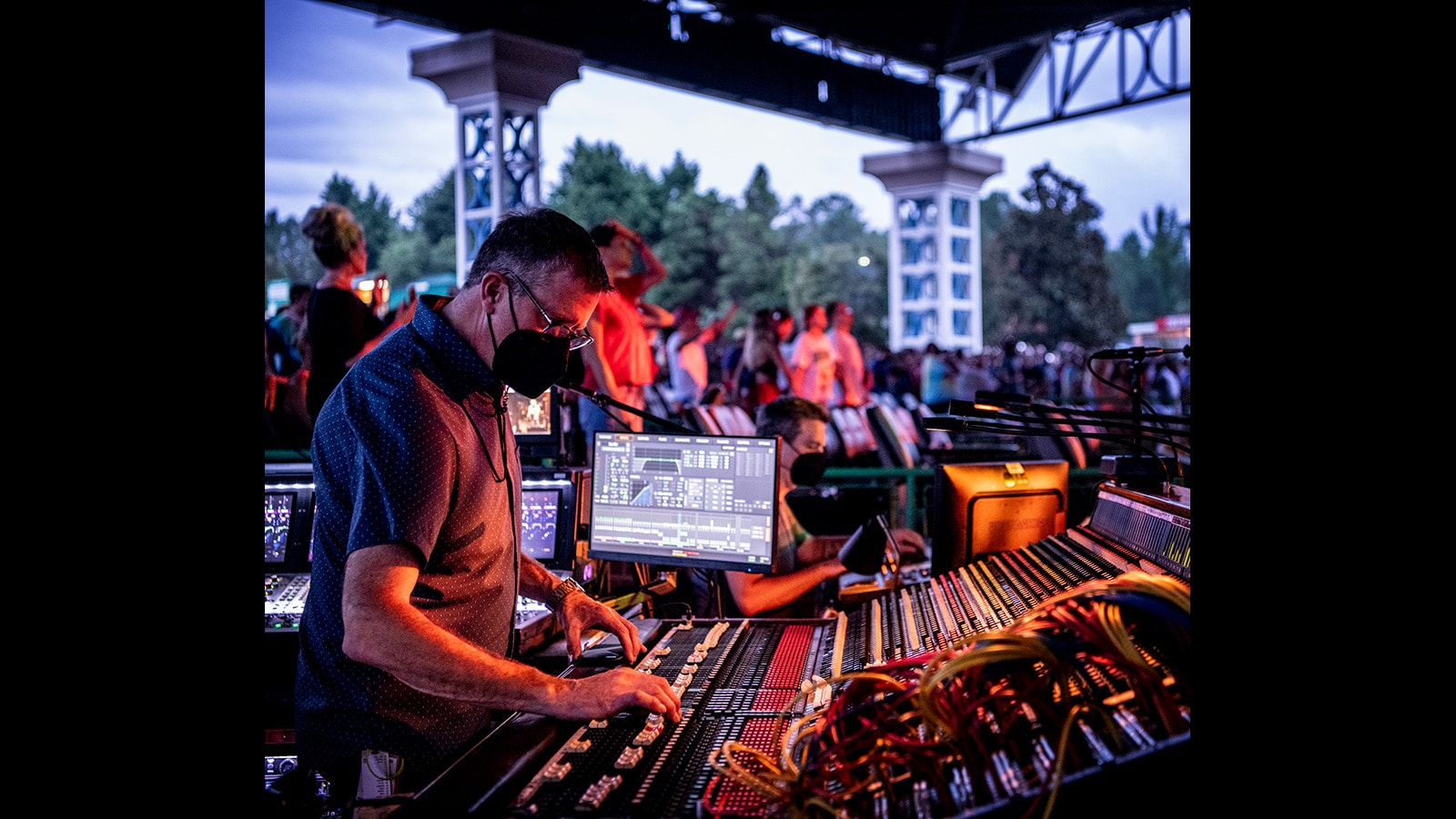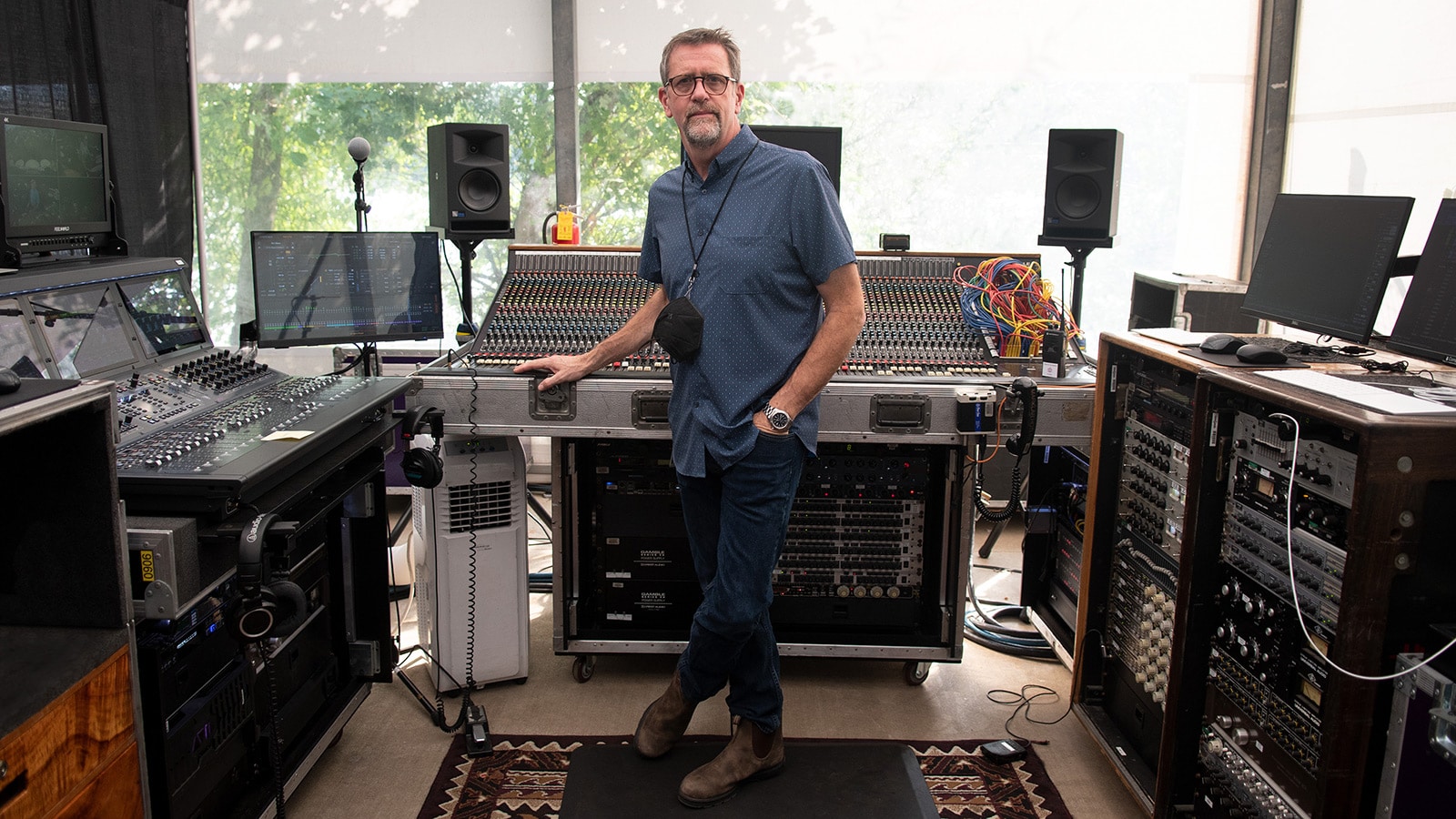Our company has long been involved in the developmental stages, as a proving ground for what works and doesn’t work for a touring company. So, we have a long development history and growth with Meyer, and with the new products it keeps getting better, even easier to deploy, yet always with the fidelity we’ve come to expect from Meyer products.”
Derek FeatherstoneUltraSound CEO and Dead & Company Production Director/FOH Mixer
Dead & Company’s highly anticipated shed and stadium tour is rolling into autumn, with more than 30 concerts scheduled between the August 16 launch in Raleigh, North Carolina and the grand finale on Halloween weekend. Following a decades-long tradition established by the Grateful Dead, this latest iteration of the legendary jam band is touring with audio production anchored by a Meyer Sound LEO system provided by UltraSound.
The tour stops at a mix of sheds/amphitheaters and sports stadiums, including major league ballparks in New York, Philadelphia, and Chicago.
Meyer Sound’s enduring relationship with the Grateful Dead (and subsequent spin-offs) extends back prior to the company’s founding in 1979, with company President & CEO John Meyer consulting on the legendary Wall of Sound. The band was often heard through the Meyer-designed JM-3 and JM-10 loudspeakers from McCune Audio shortly thereafter.
“We’ve obviously been working hand-in-hand with Meyer for many years,” says Derek Featherstone, who doubles as both CEO of UltraSound and FOH engineer for Dead & Company. “I came on board in 1988, but I know UltraSound started developing products with Meyer back in late 1979. It’s a two-way relationship, because our company has long been involved in the developmental stages, as a proving ground for what works and doesn’t work for a touring company. So, we have a long development history and growth with Meyer, and with the new products it keeps getting better, even easier to deploy, yet always with the fidelity we’ve come to expect from Meyer products.
“For this tour we have prepared for a remote pandemic mixing scenario. When we are faced with a venue that has a compromised mix position that would put the crew within 6-feet of the crowd, we move the FOH mix to backstage in a dressing room,” continues Featherstone. “Using the Meyer GALAXY AVB network, we have set up a FOH drive tuning station for the daytime in addition to running the analyzer mics back to the dressing room via AVB. We can then watch the FFT analysis of the PA, adjust it in real time, in addition to monitoring the FOH SPL. In the dressing room we can match the frequency response daily of the PA using GALAXY to the Amie studio monitors with Amie‑Sub. These monitors do a great job replicating the main PA sonically and allow us to mix the show remotely and stay connected to the PA tonal characteristics.”
For UltraSound Director of Operations Josh Osmond, the LEO system is an ideal match to the current tour. “It flies quickly and easily, and because it’s self-powered we don’t have amp racks cluttering the stage and taking up truck space,” he says. “Also, you know whatever you put into the system is exactly what comes out of it, without any audible harmonic distortion. It’s consistent in all environments, indoors and out, regardless of winds or humidity. It holds up really well in all scenarios, and that’s essential for touring these days.”
In the shed configuration, Dead & Company’s 2021 touring rig comprises main front hangs of 16 LEO line array loudspeakers per side, with identical arrays for the side hangs. For sub-bass, nine 1100-LFC low-frequency control elements are flown per side behind the LEO arrays, with an additional dozen elements in a 6 x 2 setup in the pit. Ten LEOPARD line array loudspeakers are available to be deployed singly for front fill, with system drive and optimization supplied by eight GALAXY 816 Network Platforms linked on an AVB network.
For the stadium shows, two more LEO loudspeakers are added to each of the four main arrays, one more 1100-LFC is hung on each sub-bass array, and the pit complement is expanded to 10 x 2. UltraSound adds components for the stadium delays on a per case basis with a typical system comprising three delay towers and deploying 12 LYON line array loudspeakers per tower. For Citi Field and Hershey Park Stadium, Meyer Sound rental partner DBS Audio Systems out of Pennsylvania was tasked with the project.
“Despite all the changes from day to day, with different venues and changing weather, there’s a trust that you will hear the same thing out of the system,” says UltraSound Systems Tech Michal Kacunel. “With the sheds we have to deal more with the acoustics of the structure, but even then, the response is remarkably consistent.”
Kacunel speaks for the entire tour crew when he adds, “I’m excited to be doing this again. It’s been over a year and a half since the last show, so it feels great to be back bringing live music to the loyal fans.”
Formed in 2015, Dead & Company includes former Grateful Dead members Bob Weir, Mickey Hart, and Bill Kreutzmann along with John Mayer, Oteil Burbridge, and Jeff Chimenti. The band has performed every year since, though the 2020 schedule was cut short by the pandemic following January shows in Cancun, Mexico.
For the 2021 outing, Dead & Company delves deeply into the voluminous repertoire Grateful Dead originals and covers, allowing dedicated camp followers to hear a new show at each stop. For at least the first three shows, for example, the set lists were completely different except for the improvisational “Drums” and “Space” jams.
Established in 1978 by Don Pearson and Howard Danchik, UltraSound started providing audio services for the Grateful Dead that same year and quickly established a reputation for delivering high-quality audio in stadium-size venues. Other artists and ensembles receiving audio support from UltraSound include the Dave Matthews Band, Volbeat, Bob Dylan, Primus, Metallica, Bobby Weir and Wolf Bros, and the San Francisco Symphony. The company recently moved into its new headquarters and warehouse facility in Petaluma, California.

